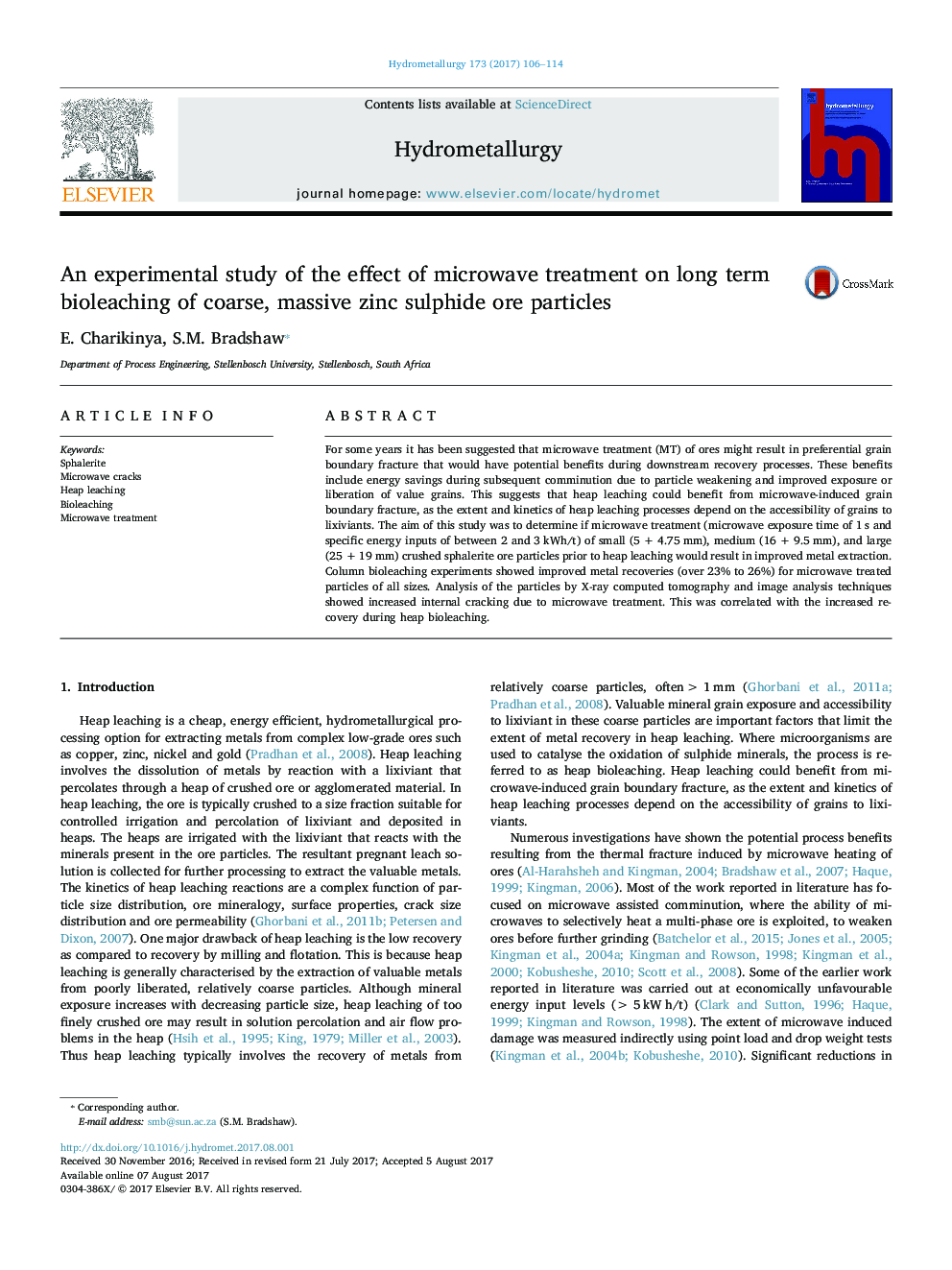| کد مقاله | کد نشریه | سال انتشار | مقاله انگلیسی | نسخه تمام متن |
|---|---|---|---|---|
| 6476749 | 1425531 | 2017 | 9 صفحه PDF | دانلود رایگان |
- Microwave pre-treatment of ore for bio-leaching leads to improved leaching recovery.
- Microwave pre-treatment creates new crack surface area.
- Microwave enhanced leaching recovery can be achieved at economical energy inputs.
- Improvements in overall Zn metal recoveries of over 20% have been demonstrated.
For some years it has been suggested that microwave treatment (MT) of ores might result in preferential grain boundary fracture that would have potential benefits during downstream recovery processes. These benefits include energy savings during subsequent comminution due to particle weakening and improved exposure or liberation of value grains. This suggests that heap leaching could benefit from microwave-induced grain boundary fracture, as the extent and kinetics of heap leaching processes depend on the accessibility of grains to lixiviants. The aim of this study was to determine if microwave treatment (microwave exposure time of 1Â s and specific energy inputs of between 2 and 3Â kWh/t) of small (5Â +Â 4.75Â mm), medium (16Â +Â 9.5Â mm), and large (25Â +Â 19Â mm) crushed sphalerite ore particles prior to heap leaching would result in improved metal extraction. Column bioleaching experiments showed improved metal recoveries (over 23% to 26%) for microwave treated particles of all sizes. Analysis of the particles by X-ray computed tomography and image analysis techniques showed increased internal cracking due to microwave treatment. This was correlated with the increased recovery during heap bioleaching.
Journal: Hydrometallurgy - Volume 173, November 2017, Pages 106-114
